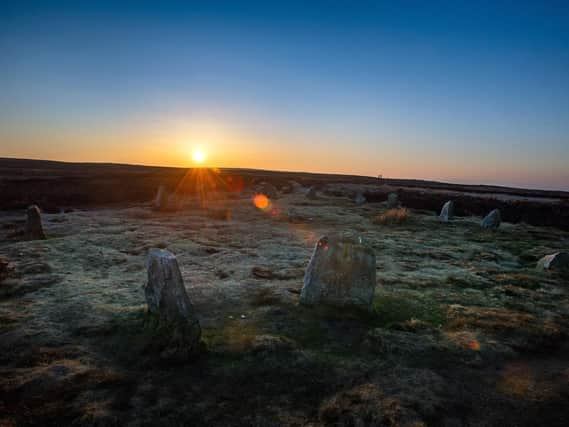This stone circle near Ilkley is Yorkshire's answer to Stonehenge


But it is not the only stone circle to be found in England. In fact, around 250 have been identified across the country including the one pictured here on the Rombalds moorland around Ilkley.
The circle, known as the Twelve Apostles, is believed to date back to the Bronze Age, around 2000BC.
Advertisement
Hide AdAdvertisement
Hide AdIndeed, according to the West Yorkshire Archaeology Advisory Service, descriptions from the 19th century suggest the circle may have actually once been made up of as many as 20 stones.
Today, the Twelve Apostles is categorised as a ‘scheduled monument’, meaning it is an archaeological site of national importance to be preserved for future generations.
In fact, all surviving examples of stone circles in England are considered worthy of protection – and Historic England explains how they can provide an insight into prehistoric activity.
“We do not fully understand the uses for the which these monuments were originally constructed,” reads its listing on the Twelve Apostles.
Advertisement
Hide AdAdvertisement
Hide Ad“But it is clear that they had considerable ritual importance for the societies that used them.
“In many instances excavation has indicated that they provided a focus for burials and the rituals that accompanied interment of the dead.
“Some stone circles appear to have had a calendrical function, helping mark the passage of time and seasons, this being indicated by careful alignment of stones to mark important solar or lunar events such as sunrise or sunset at midwinter or midsummer.”
Given its air of mystery and its offering of a glimpse into history from many centuries ago, it is perhaps not surprising that the prehistoric site, accessible by moorland walking routes, is one of West Yorkshire’s most visited.
Advertisement
Hide AdAdvertisement
Hide AdEditor’s note: first and foremost - and rarely have I written down these words with more sincerity - I hope this finds you well.
Almost certainly you are here because you value the quality and the integrity of the journalism produced by The Yorkshire Post’s journalists - almost all of which live alongside you in Yorkshire, spending the wages they earn with Yorkshire businesses - who last year took this title to the industry watchdog’s Most Trusted Newspaper in Britain accolade.
And that is why I must make an urgent request of you: as advertising revenue declines, your support becomes evermore crucial to the maintenance of the journalistic standards expected of The Yorkshire Post. If you can, safely, please buy a paper or take up a subscription. We want to continue to make you proud of Yorkshire’s National Newspaper but we are going to need your help.
Postal subscription copies can be ordered by calling 0330 4030066 or by emailing [email protected]. Vouchers, to be exchanged at retail sales outlets - our newsagents need you, too - can be subscribed to by contacting subscriptions on 0330 1235950 or by visiting www.localsubsplus.co.uk where you should select The Yorkshire Post from the list of titles available.
Advertisement
Hide AdAdvertisement
Hide AdIf you want to help right now, download our tablet app from the App / Play Stores. Every contribution you make helps to provide this county with the best regional journalism in the country.
Sincerely. Thank you.
James Mitchinson
Editor
